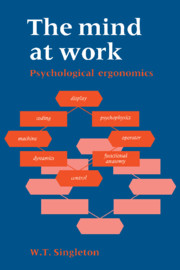6 - RISK AND RELIABILITY
Published online by Cambridge University Press: 22 September 2009
Summary
Concepts
Risk
Risk is associated with the undesired outcomes of an action or absence of an action. Every choice involves risk because the consequences are never certain and inevitably some consequences are less desirable than others. Statistically, risk can be defined as the sum of the probabilities of the separate undesirable consequences of an activity. As Rowe (1986) put it, risk is the downside of a gamble. Alternatively the pursuit of any objective can be assessed in cost: value terms and risks are associated with the costs. Risk is often defined as a compound measure of probability and magnitude of adverse effect, e.g. Lowrance (1980), but this complicates even further an already complex concept because the magnitudes of adverse effects involve value judgments which are idiosyncratic. With this kind of definition there can be no agreed measure of a specific risk.
Risk has become a social and technical rather than a personal problem because technology at any level generates hazards which are not confined to one person pursuing his private affairs. Even when using a hand-tool a worker who suffers or causes suffering might readily imply that the risk was generated not by him but by the tool design, by lack of appropriate training or by inadequate instructions. With higher technology the situation becomes still more complicated. A passenger in any vehicle is subject to appreciable risks over which he has no control once he has entered the vehicle.
- Type
- Chapter
- Information
- The Mind at Work , pp. 260 - 307Publisher: Cambridge University PressPrint publication year: 1989



